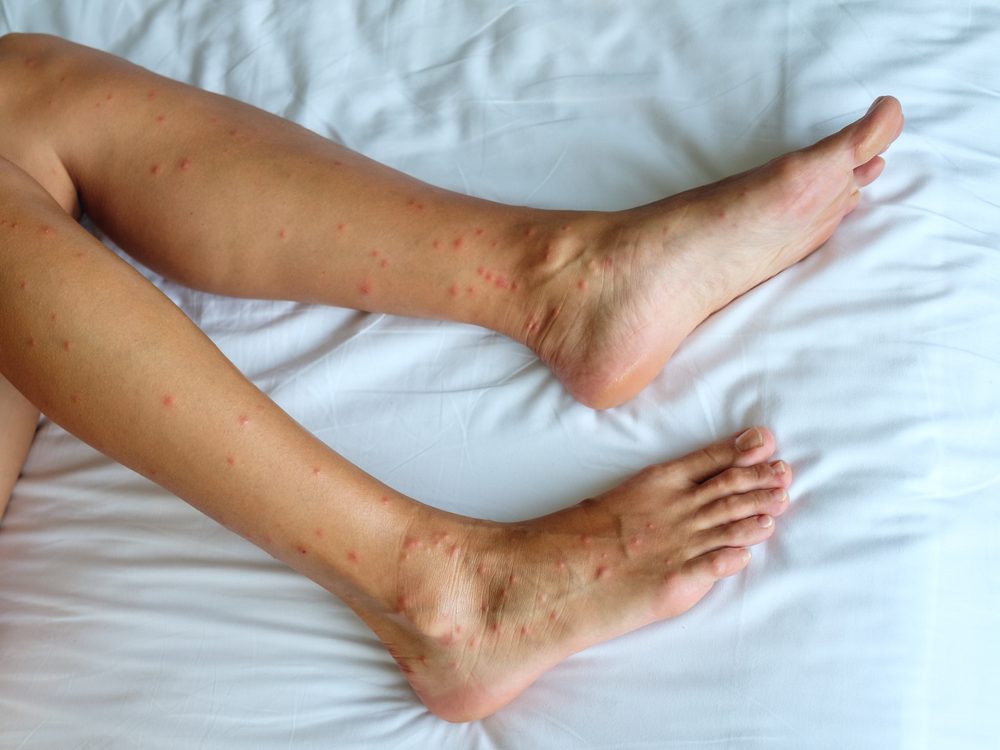According to a story from International Business Times, a French couple encountered an unpleasant skin condition as a result of a pest infestation in their home. Their case was reported in the New England Journal of Medicine. The pair ended up seeking medical treatment three days after itchy rashes appeared on their stomachs.
On the woman, the rashes actually began to develop a distinct pattern of pink dots which had a trail of spots behind them, resembling a comet. As it turns out, this comet sign is a giveaway sign of a bite from the European straw itch mite (Pyemotes ventricosus). The skin condition that is the result of these bites is called pyemotes ventricosus dermatitis. (The Centers for Disease Control has information on another case from France here.)
Typically, these creatures, which are incredibly small and are almost impossible to see, are parasites of other invertebrates, such as insects. Their preferred host are insect larvae, such as the larvae of beetles. More specifically, the common furniture beetle (Anobium punctatum) is a frequent target. These woodboring beetles are pests that can infiltrate homes and damage wooden furniture. When they do so, they bring along the parasitic mites with them.
In this case, the couple’s home suffered from an infestation of beetles, and these beetles had plenty of mites feasting on their larvae. However, the mites aren’t always so picky, and when their regular hosts aren’t around, they will target mammals, including cows, horses, and people. Humans can also get bitten if they handle furniture that has mites on it.
While getting bitten by mites doesn’t sound fun, pyemotes ventricosus dermatitis is very rare, with less than 100 cases reported. However, bites from this mite are likely underreported and aren’t easy to distinguish from other parasitic bites; the comet-like rash only appears in around a fourth of cases. In some instances, vomiting and fever have been reported from the bites, but the condition resolves on its own in three weeks or less. In this case study, the couple was treated with antihistamines and got rid of their infected furniture afterwards.
Read more about this case of pyemotes ventricosus dermatisis at the International Business Times.







